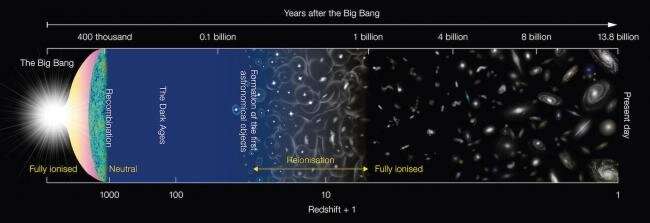Cosmic galaxy assembly and the evolution of metals

Astronomers refer to all the elements heavier than helium as "metals," even elements that are typically found in gaseous form. In the big bang only hydrogen and helium (and a trace of lithium) were created while the "metals" were all made subsequently in stellar processes. The abundance of metals in the interstellar medium (ISM) of galaxies—the metallicity of the galaxies—thus quantifies the collective stellar processes that govern galactic evolution. The metallicity of the gaseous phase of the ISM (excluding particulates) has been found to be closely related to the history of a galaxy's star formation and can be determined using optical spectroscopic observations of atomic lines, especially bright ones from ionized oxygen and neon. Another pivotal process in setting the metallicity is gas flow both out of the galaxy, driven by supernovae or other processes, and into the galaxy from the intergalactic medium.
How the metallicity of galaxies has evolved over cosmic time has become one of the most interesting questions in cosmology because it traces how stars have influenced the elemental composition of the universe in the roughly thirteen billion years since they first appeared, roughly a hundred or more million years after the big bang.
CfA astronomer Mojegan Azadi is a member of team performing the MOSDEF survey, a four year program using the Multi-Object Spectrometer For Infrared Exploration (MOSFIRE) on the Keck I telescope to obtain optical spectra of about 450 galaxies in epochs from 1.7 to 4.5 billion years after the big bang. The astronomers measured the metallicity of each galaxy in the sample and concluded that many of the relations involving metallicity in the local universe also apply at these earlier times. For example, the relationship between a galaxy's metallicity and stellar mass is about the same, as is the correlation between metallicity and star formation rate.
These important new results signal that the processes that govern the growth of the element abundances in galaxies, whether by gas flows or star formation, have held in about the same form for at least the past twelve billion years.
More information: Ryan L. Sanders et al, The MOSDEF Survey: The Evolution of the Mass–Metallicity Relation from z = 0 to z ∼ 3.3*, The Astrophysical Journal (2021). DOI: 10.3847/1538-4357/abf4c1
Journal information: Astrophysical Journal
Provided by Harvard-Smithsonian Center for Astrophysics





















